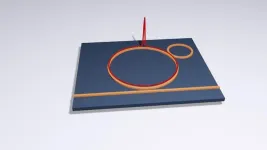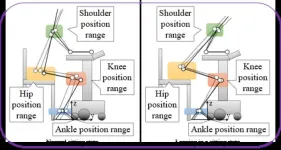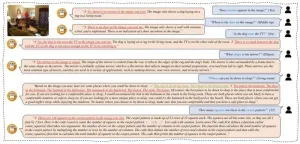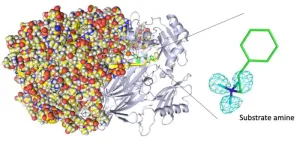(Press-News.org) Over the past two decades, coral reefs have declined at unprecedented rates. This is in part because of extreme weather events, which cause wide-spread coral bleaching, a process during which corals lose their color because of stressors, including changes in water temperature, light, or nutrient availability. One of the worst mass bleaching events occurred in 2016 and 2017 on the Great Barrier Reef, causing bleaching on 91% of the system’s reefs.
As frequency and severity of mass bleaching events are expected to increase in the future, researchers are looking for ways to protect corals from excessive radiation and temperatures. As part of the Cooling and Shading subprogram of the Reef Restoration and Adaptation Program (RRAP), which is developing solutions to help coral reefs resist, adapt to, and recover from warming ocean temperatures, researchers in Australia have examined the effectiveness of shading on two coral species.
“We show that intermittent shading under controlled conditions can moderate light stress and slow bleaching,” said Dr Peter Butcherine, a research fellow at Southern Cross University and lead author of the study published in Frontiers in Marine Science. “Reducing sunlight by 30% for four hours around solar noon can slow the onset of the bleaching response in some thermally-stressed shallow corals.”
Just four hours of shade slows bleaching
Researchers collected two species of stony corals, Turbinaria reniformis, commonly known as yellow scroll coral, and Duncanopsammia axifuga, also called whisker coral. After transportation and acclimatization to a lab, tanks containing coral fragments were covered with 30% shade cloth for either four hours around noon, or 24 hours. Shading corals for four hours in the middle of the day recreates light reductions similar to those on a cloudy day.
Results showed that shaded corals bleached significantly less than unshaded ones, and corals that were shaded for 24 hours bleached less than those shaded for four hours. Higher water temperatures also favored bleaching.
Shading delayed the corals’ bleaching response by up to three degree heating weeks (DHW). Corals begin to accrue DHW once water temperature exceeds the maximum monthly mean water temperature by more than 1°C. After surpassing this threshold, they start to bleach. When heat stress reaches four DHW, significant coral bleaching can be observed.
Different responses to shading
Corals, however, did not respond in the same way to shading. For T. reniformis 30% shading for four hours a day was found enough to delay bleaching. The shading response of D. axifuga, however, was more limited: While the coral responded to 24-hour shading until three DHW, it became unresponsive after.
“The complex nature of coral interactions with their environment means there are likely to be a range of responses to shading. We showed that coral species can respond differently when shaded, but these differences were not necessarily detrimental, just different from each other,” Butcherine explained.
Yet, no matter how well corals respond to shading, thermal stress in intense prolonged marine heatwaves can still overwhelm the shading benefit, the researchers pointed out.
How to shade a reef
“This work directly informs the development of cooling and shading interventions to help protect the Great Barrier Reef during future bleaching events,” said Dr Daniel Harrison, a researcher at Southern Cross University and program lead of RRAP Cooling and Shading. “Coral reefs are a critically important ecosystem so it is vital to investigate all the possible ways we can help them survive climate change.”
There are several ways to shade reefs, including the use of artificial coverings and seawater fogging systems. The latter is one of the interventions that researchers in the RRAP Cooling and Shading program are working on. “The focus of the fogging technologies we are developing is for deployment at an individual reef site of some tens of hectares in size,” Harrison continued. Currently, the team’s efforts are aimed at localized cooling and shading of small high-value reef environments.
“Our trials show some promising results, but there is still more research and development required before the current technologies are ready for scaled up deployment in the field,” Harrison concluded.
END
Shading the Great Barrier Reef from the sun might slow bleaching-induced coral decline
Shading corals for only a few hours a day during intense sunlight reduces bleaching in some species, scientists found, advancing the development of cooling and shading interventions to protect reefs
2023-09-20
ELSE PRESS RELEASES FROM THIS DATE:
New method makes microcombs ten times more efficient
2023-09-20
Microcombs can help us discover planets outside our solar system and track new diseases in our bodies. But current microcombs are inefficient and unable to reach their full potential. Now, researchers at Chalmers University of Technology in Sweden have scored a world first with their solution to make microcombs ten times more efficient. Their breakthrough opens the way to new discoveries in space and healthcare and paves the way for high-performance lasers in a range of other technologies.
Laser frequency ...
Over 50s with ADHD ‘overlooked’ for diagnosis and treatment, say experts
2023-09-20
Doctors urgently need better international guidance on treating attention deficit hyperactivity disorder (ADHD) in the over 50s, conclude world-leading experts reviewing current research on this increasing issue globally.
Published in the peer-reviewed journal Expert Review of Neurotherapeutics, the team’s findings highlight a ‘striking’ gap in knowledge about older people as existing guidelines focus on children and young adults.
“Our analysis concludes that better approaches are urgently required to screen and diagnose people aged from around age 50 to 55,” says lead author Dr Maja Dobrosavljevic ...
New evidence confirms patients with severe psoriasis are at a higher risk for heart disease
2023-09-20
Philadelphia, September 20, 2023 – In the largest study to date exploring the relationship between severe psoriasis and coronary microvascular dysfunction, researchers have found further evidence that patients with severe psoriasis are at higher cardiovascular risk. The results are published in the Journal of Investigative Dermatology, published by Elsevier.
Psoriasis is a chronic systemic immune-mediated inflammatory disease that affects 1-3% of the global population. In this study, a total of 503 patients with psoriasis, and without clinical cardiovascular disease, underwent transthoracic Doppler echocardiography to evaluate coronary microcirculation. ...
Google could play a big role in protecting the health of American children
2023-09-20
Applying Google’s own nutrition advertising policy to the US market would slash the number of products from the country’s top 25 food and beverage manufacturers that could be marketed to children online, according to new research from The George Institute for Global Health.
Published today in the American Journal of Preventive Medicine, the findings suggest the global company could play a significant role in improving the health of future generations by reducing their exposure to, and preference for, unhealthy foods and drinks.
Lead author Dr Elizabeth Dunford, Research ...
Should we screen all newborns for neurodevelopmental disorders?
2023-09-20
Expanding newborn screening (NBS) to include identifying genes associated with an increased risk for neurodevelopmental disorders (NDD) would cause more harm than good, according to an article published in Pediatrics. While some experts believe early identification of NDDs in the newborn period would provide an equitable way to flag and treat disabilities early, the authors of the new paper contend that broader genomic sequencing would worsen existing health disparities.
“The benefit of early genomic screening hinges upon the ability ...
Creation of training data to estimate the states of care robot users
2023-09-20
Overview
A research team led by Assistant Professor Mizuki Takeda from the Department of Mechanical Engineering, Toyohashi University of Technology, has developed a technique to generate training data for robots that operate based on estimations of the user’s state using machine learning. To date, some methods based on machine learning have been proposed to estimate the state of a robot users using candidate points for the position of the center of gravity. However, for such learning, training data corresponding to when the robot is used to support movements are required. The above-mentioned research ...
How good is Google Bard’s visual understanding? An empirical study on open challenges
2023-09-20
Bard, Google’s AI chatbot, based on LaMDA and later PaLM models, was launched with moderate success in March 2023 before expanding globally in May. It’s a generative AI that accepts prompts and performs text-based tasks like providing answers, and summaries, and creating various forms of text content. On 13 July 2023, Google Bard announced a major update which allowed providing images as inputs together with textual prompts. It was claimed that Bard can analyze visual content and provide a description (e.g., image captions) or answer questions using visual ...
Global obesity battle stymied: Deeper understanding is needed
2023-09-20
Prof. John Speakman from the Shenzhen Institute of Advanced Technology (SIAT) of the Chinese Academy of Sciences, alongside Prof. Kevin Hall from the National Institutes of Health (U.S.), Prof. Thorkild Sorensen from the University of Copenhagen and Prof. David Allison from Indiana University (U.S.), has published a perspective article on potential mechanisms of obesity pathogenesis.
It was based on an academic conference held by The Royal Society, with experts and scholars in the field of obesity research discussing the potential pathogenesis of obesity.
This article was published in Science on Aug. 31.
Governments ...
Imaging the smallest atoms provides insights into an enzyme's unusual biochemistry
2023-09-20
Osaka, Japan – When your wounds heal and your liver detoxifies a poison such as histamine you ingested, you can thank the class of enzymes known as copper amine oxidases for their assistance. Identifying the exact positions of the smallest hydrogen atoms in these enzymes is challenging with commonly used technologies, but is critical to engineering improved enzymes that exhibit unusual yet useful biochemical reactivity.
Now, in a study recently published in ACS Catalysis, a team led by researchers ...
Grant supports research on extreme risk of alcohol abuse among Pacific Islander young adults
2023-09-20
RIVERSIDE, Calif. -- In previous research, Andrew Subica and his colleagues found exceptionally high rates of alcohol use disorder (or alcohol abuse) and alcohol-related harms among Pacific Islander young adults. Now Subica, an associate professor in the UC Riverside School of Medicine’s Department of Social Medicine, Population, and Public Health, has received a $3 million grant from the National Institute on Alcohol Abuse and Alcoholism, or NIAAA, of the National Institutes of Health to conduct research aimed at preventing these disorders and harms in Pacific ...
LAST 30 PRESS RELEASES:
On-demand upgraded recycling of polyethylene and construction of sustainable multifunctional materials based on the "LEGO" strategy
New "Stomata in-sight" system allows scientists to watch plants breathe in real-time
Anorexia nervosa may result in long-term skeletal muscle impairment
Narrative-based performance reviews deemed fairest by employees
New insights reveal how advanced oxidation can tackle emerging water pollutants
New review shows how biomass can deliver low-carbon gaseous fuels at scale
Climate change is quietly rewriting the world’s nitrogen cycle, with high stakes for food and the environment
Study finds SGLT-2 inhibitors linked to lower risk of diabetic foot nerve damage
Microbes may hold the key to brain evolution
Study examines how the last two respiratory pandemics rapidly spread through cities
Gender stereotypes reflect the division of labor between women and men across nations
Orthopedics can play critical role in identifying intimate partner violence
Worms as particle sweepers
Second spider-parasitic mite described in Brazil
January 2026 issues of APA journals feature new research on autism, pediatric anxiety, psychedelic therapy, suicide prevention and more
Private equity acquired more than 500 autism centers over the past decade, new study shows
New cervical cancer screening guidelines from the US Department of Health and Human Services
Estimated burden of COVID-19 illnesses, medical visits, hospitalizations, and deaths in the US from October 2022 to September 2024
Smartphone use during school hours by US youth
Food insecurity and adverse social conditions tied to increased risk of long COVID in children
Earliest, hottest galaxy cluster gas on record could change our cosmological models
Greenland’s Prudhoe Dome ice cap was completely gone only 7,000 years ago, first GreenDrill study finds
Scientific validity of blue zones longevity research confirmed
Injectable breast ‘implant’ offers alternative to traditional surgeries
Neuroscientists devise formulas to measure multilingualism
New prostate cancer trial seeks to reduce toxicity without sacrificing efficacy
Geometry shapes life
A CRISPR screen reveals many previously unrecognized genes required for brain development and a new neurodevelopmental disorder
Hot flush treatment has anti-breast cancer activity, study finds
Securing AI systems against growing cybersecurity threats
[Press-News.org] Shading the Great Barrier Reef from the sun might slow bleaching-induced coral declineShading corals for only a few hours a day during intense sunlight reduces bleaching in some species, scientists found, advancing the development of cooling and shading interventions to protect reefs




